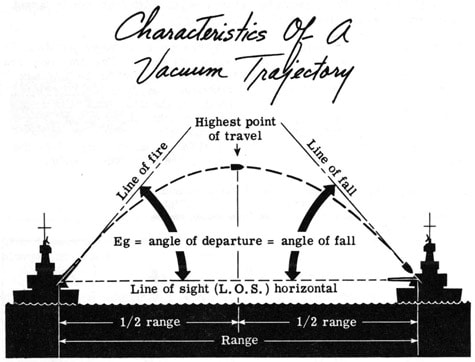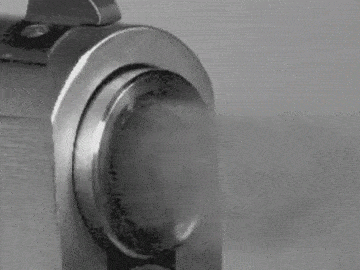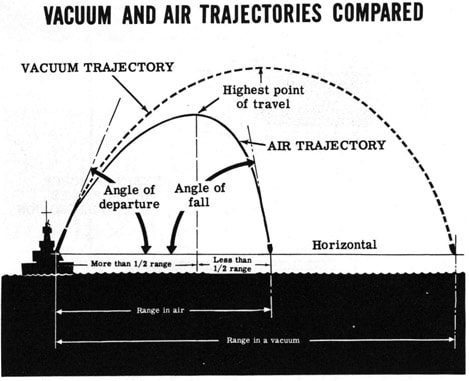The pressure builds, the hot fumes spiral around the bullet as its ejected from the barrel of the gun, angular momentum attempts to hold the bullets course despite all external forces working against it.
|
Barrels graphic maritime.org
|
Barrel rifling from thefirearmblog.com
|
Where a bullet lands is determined by more factors than just momentum. As the target moves farther away from the marksmen, acceleration due to gravity increases bullet drop, wind and air currents create friction on the bullet and the random spin of the projectile creates bullet drift, all of which pull the projectile off of its course. To compensate, guns both large and small, artillery and handheld, must use some form of barrel rifling and elevation to compensate for unwanted external forces.
|
Angular Momentum
|
Rifling in many barrels allows air to spiral through the curved grooves which in turn spins the bullet to provide more accuracy as the bullets trajectory is stabilized. The speeding body of the bullet due to rifling imparts angular momentum on the bullet, which is responsible for a major increase in the accuracy of a bullet over a longer distance. Angular momentum refers to the amount of rotation in the bullet and is characterized by its resistance to rotation.
This rotation can be quantified by using the equation L=I*W, which means the angular momentum vector acting on the bullet is the product of its moment of inertia and the angular velocity of the bullet. We can decompress this formula by substituting I and W for their respective values on the right, and subsequently come up with the formula L=r*m*v. Angular momentum equals radius times mass times velocity.
Gravity
|
/ L = I * W
/ I = R^2 * M / W = (V / R) / L = R * M * V Bullet leaving barrel. imgur.com
South Cushman Shooting Range, Fairbanks.
|
Air Friction
|
The friction of air or wind on a bullet has wide ranging implications for bullet drift, but for simplicity's sake I will only be covering the downward forces of air friction and not the inclusion of potential cross wind scenarios. In the graphic to the right, air has a great impact on how far a bullet travels.
|
Demonstrating how air or a lack of air affects how far a bullet travels.
|
Create a free web site with Weebly










